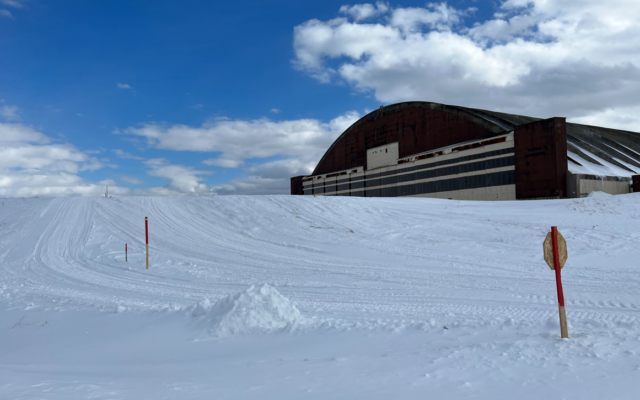
Snowmobile registrations are the lowest in 8 years
By Julie Harris, Bangor Daily News Staff
Late season snow hasn’t bailed out Maine’s beleaguered snowmobile season, as rains and wind melt the state’s white gold.
Maine has had a tough winter for snowmobiling.
Between the wind and rain storms in December and early 2024 that devastated trails, the warmer-than-normal temperatures and the sporadic snowfall all winter, the number of residents who chose to register their snowmobiles this year decreased nearly 10,000 from last year.
Snowmobile registrations were the lowest this winter season since 2015-2016, according to state data. The number of non-residents who purchased registrations remained comparable to the last two years at approximately 20,000.
Snowmobiling has a more than $600 million impact on the state’s economy each year, according to a University of Maine study in 2020 commissioned by the Department of Agriculture, Conservation and Forestry. It, along with other snow sports, also contributes $68 million to the state’s gross domestic product, the Department of Commerce has determined.
That means the health of the industry is important to the state’s bottom line.
“As a snowmobiler myself, I appreciate, along with many others, how important snowmobiling is to Maine’s winter economy. The governor recognizes, and is concerned about, the significant hardship that the warmer weather and lack of snow has had on businesses in The County and across the state, said Carolann Ouellette, director of the Maine Office of Outdoor Recreation in the Maine Department of Economic and Community Development.
Resident registrations in 2023-24 totaled 46,813, while nonresidents purchased 20,765, including transfers, three-day and 10-day registrations for a grand total of 67,578.
The 2015-16 number of registrations at 59,182 is significant too as the lowest in 31 years of records.
The average number of total registrations for the last five years was 86,129.
The numbers were not surprising to the Maine Department of Inland Fisheries and Wildlife. The total was understandable due to the late start to the snowmobile season and early end in some areas due to the warmer than normal temperatures and the lack of snow, said Mark Latti, MDIF&W director of communications.
The ups and downs of the snowmobiling season have kept social media pages abuzz with the exchange of information on what trails are open, rerouted, repaired and closed temporarily or for the season.
The storm that delivered torrential rain and high winds washed out trails and bridges and brought down thousands of trees that blocked routes in December. Another storm on its heels in January didn’t help the trail situation. Snowmobile clubs across the state scrambled to repair their trails for the ensuing season, all with volunteer labor.
Many trails had bare areas during parts of the season and groomers had to work hard to maintain a base, often scraping snow from the sides into the main travel ways. The snow storm on Saturday, March 23, dumped more than 20 inches of snow in many areas of western, central and northern Maine, which are the primary snowmobiling areas, reviving many trails. Those areas could get more snow in the first week of April too, if weather predictions prove correct.
Some snowmobilers tried to ride the new surface after the March storm before trails were groomed and found their sleds buried in the deep, moisture-laden snow. Groomers got on the trails as quickly as they could, extending the season just a little longer.
A handful of clubs, such as Blue Ridge Riders, have closed their trails for the season. Blue Ridge reported soft ground and no base, which would hinder the groomer and perhaps damage it, according to club member Kate Tiffany.
The snow from the March storm was melting rapidly, she said.
Many of Blue Ridge’s signs were removed for the season, and the club elected not to mark the trail across Moosehead this year because of the inconsistency in the ice thickness. There also is an active logging operation near one of the club’s trails, she said.
When spring stretches toward summer and trails dry out, clubs will be able to get out and see what else needs to be done to recover from the storm damage.
In the meantime, the clubs that can, especially those in the north and west, are enjoying what they have for snow and hoping that the 2024-25 season will be kinder.